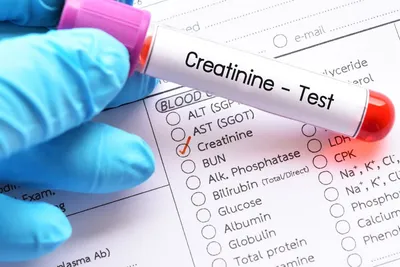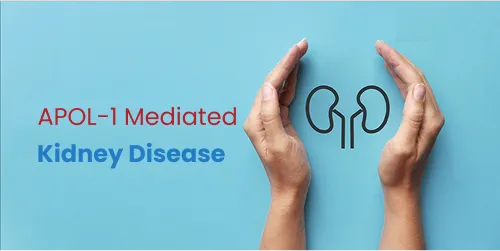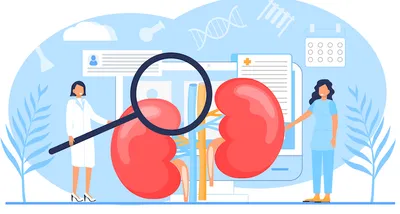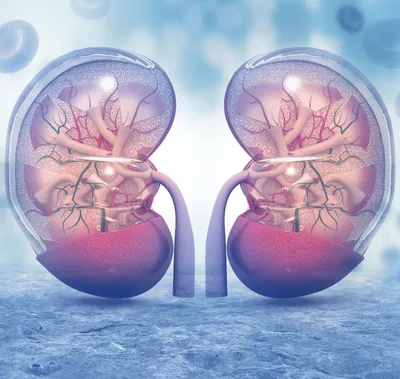Race and Ethnicity’s Impact On Development of Kidney Disease

Race and Ethnicity’s Impact On Development of Kidney Disease
Kidney disease affects around 37 million adults in the United States, and is one of the U.S.’s most common diseases. Research has identified groups that are more likely to develop kidney disease than others.
Who is more at risk?
Black Americans are more than 3 times as likely and Hispanic Americans are about 1.3 times more likely to experience kidney failure when compared to White Americans.
Why are these groups at an increased risk?
One reason these minority groups are at an increased risk for kidney disease is a tendency to have higher rates of several medical conditions that are known risk factors including:
- Diabetes
- Heart disease
- Obesity
- High blood pressure
There are other causes of kidney disease, but those mentioned above tend to be the most common risk factors.
Another reason Black and Hispanic Americans are at an increased risk for kidney disease is that these populations statistically have less access to healthcare than White Americans. It is estimated that around 33% of Hispanic Americans are uninsured. That number is around 20% for Black Americans. With less access to healthcare, regular yearly checkups and doctors visits are less common leading to late diagnosis and treatment of kidney disease.
How can kidney disease be detected early?
Kidney disease is known as a “silent killer” as most people don’t know they have kidney disease until symptoms are prevalent and disruptive, at which point it is often hard or impossible to slow the damage and prevent progression to kidney failure. Thus, catching kidney disease in the early stages is the key to survival and sustaining good quality of life.
There are a couple of simple tests that can be performed to help catch kidney disease early. A urine test to look for protein and a blood test to look at creatinine levels can be early alerts for doctors that you may be experiencing lowered kidney function (learn more about these tests and other diagnostic tests here). These can be performed in yearly checkups or as needed at the suggestion of your doctor to monitor kidney performance.
Lowering your risk of kidney disease
Higher risk populations can lower their risk of developing kidney disease by managing health conditions that are known risk factors and being tested as regularly as possible for signs of lowered kidney function.
Getting treatment for diabetes, heart disease, obesity and high blood pressure can be difficult, especially if you don’t have insurance or easy, regular access to healthcare. Aiming to live a healthy lifestyle by eating foods that fuel you and finding ways to move your body everyday can help lower your risk for these conditions as well as slow the progression of kidney disease if it is developed.
Try to learn as much as you can. Being informed about what kidney disease is, what the symptoms are, and what treatment looks like can help you be an active part of your health team and lower your risk for progressing to late stage kidney disease. You can get a good start to understanding the answers to these questions with our Kidney Disease 101’s.
Race and Ethnicity’s Impact On Development of Kidney Disease
Kidney disease affects around 37 million adults in the United States, and is one of the U.S.’s most common diseases. Research has identified groups that are more likely to develop kidney disease than others.
Who is more at risk?
Black Americans are more than 3 times as likely and Hispanic Americans are about 1.3 times more likely to experience kidney failure when compared to White Americans.
Why are these groups at an increased risk?
One reason these minority groups are at an increased risk for kidney disease is a tendency to have higher rates of several medical conditions that are known risk factors including:
- Diabetes
- Heart disease
- Obesity
- High blood pressure
There are other causes of kidney disease, but those mentioned above tend to be the most common risk factors.
Another reason Black and Hispanic Americans are at an increased risk for kidney disease is that these populations statistically have less access to healthcare than White Americans. It is estimated that around 33% of Hispanic Americans are uninsured. That number is around 20% for Black Americans. With less access to healthcare, regular yearly checkups and doctors visits are less common leading to late diagnosis and treatment of kidney disease.
How can kidney disease be detected early?
Kidney disease is known as a “silent killer” as most people don’t know they have kidney disease until symptoms are prevalent and disruptive, at which point it is often hard or impossible to slow the damage and prevent progression to kidney failure. Thus, catching kidney disease in the early stages is the key to survival and sustaining good quality of life.
There are a couple of simple tests that can be performed to help catch kidney disease early. A urine test to look for protein and a blood test to look at creatinine levels can be early alerts for doctors that you may be experiencing lowered kidney function (learn more about these tests and other diagnostic tests here). These can be performed in yearly checkups or as needed at the suggestion of your doctor to monitor kidney performance.
Lowering your risk of kidney disease
Higher risk populations can lower their risk of developing kidney disease by managing health conditions that are known risk factors and being tested as regularly as possible for signs of lowered kidney function.
Getting treatment for diabetes, heart disease, obesity and high blood pressure can be difficult, especially if you don’t have insurance or easy, regular access to healthcare. Aiming to live a healthy lifestyle by eating foods that fuel you and finding ways to move your body everyday can help lower your risk for these conditions as well as slow the progression of kidney disease if it is developed.
Try to learn as much as you can. Being informed about what kidney disease is, what the symptoms are, and what treatment looks like can help you be an active part of your health team and lower your risk for progressing to late stage kidney disease. You can get a good start to understanding the answers to these questions with our Kidney Disease 101’s.

about the author
Mary Arnett
Mary joined HealthTree in 2022. She is now the AML & MDS Patient Engagement Manager. She is passionate about giving power to patients through knowledge and health education. If she can help one patient feel more confident participating in discussions with their healthcare team and making treatment decisions, she will feel like she has succeeded. When she isn't advocating for patients, she loves being an aunt, attending concerts, and experimenting with new recipes in the kitchen.
More on Core Education
Get the Latest Kidney Disease Updates, Delivered to You.
By subscribing to the HealthTree newsletter, you'll receive the latest research, treatment updates, and expert insights to help you navigate your health.








